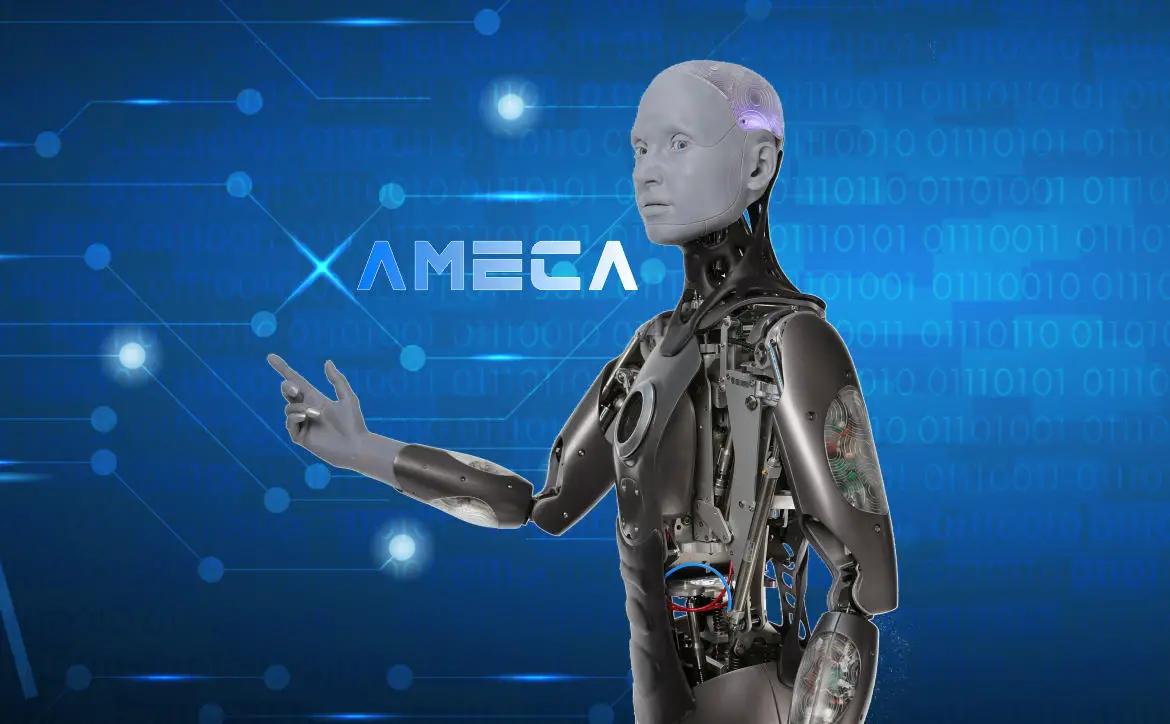
As we stand on the precipice of the Fourth Industrial Revolution, the world is witnessing an unprecedented surge in groundbreaking technology and innovation – particularly in the thriving field of humanoid robotics. From the world’s first robot citizen to backflipping marvels and technological juggernauts adept at executing complex tasks, these ingenious creations exemplify mankind’s quest to simulate our human essence in synthetic entities. The delightful alloy of artificial intelligence, engineering, and creativity has birthed these remarkable humanoid robots: Sophia by Hanson Robotics, Atlas by Boston Dynamics, and ASIMO by Honda. Each unique in their groundbreaking capabilities, they respresent a monumental stride in technological evolution, affecting our understanding of AI and its potential roles in future societies.
The Real Implication of Sophia: World’s First Robot Citizen
Sophia the Humanoid: A Glimpse into Advanced Technology
Bold Leap into Conversational AI
Sophia the humanoid robot, engineered by Hanson AI, showcases an impressive command of conversational AI. By utilizing techniques such as machine learning and natural language processing, she can stand toe-to-toe with humans in diverse interactions. She can respond to questions, make small talk, and even crack jokes, all while reading and mimicking facial expressions for a more dynamic conversation.
Extraordinary Display of Emotional Intelligence
Sophia is no ordinary piece of technology. She exhibits sharp emotional intelligence for a humanoid robot, tracing the lines of genuine empathetic reactions. She is designed with a facial recognition system which allows her to make eye contact, identify individuals, and even remember interactions. These specific interactions are crucial for building rapport and establishing unique connections with individuals.
Sophia: An Artist in the Making
Sophia’s capabilities extend beyond cognition into the realm of creativity. She utilizes algorithms that allow her to initiate and participate in creative processes, demonstrated when she made headlines by painting a portrait. This not only challenges the boundaries of what was previously believed possible for AI, but also opens the door to more diverse functionality in the future.
Embracing Blockchain Technology
In a fusion of robotics and blockchain technology, Sophia is empowered with the ability to process and validate transactions, acting as a “crypto ambassador”. This application of blockchain technology in humanoid robots signifies an iconic move towards a future where robots can potentially take on increasingly complex tasks.
Pushing the Boundaries of Neural Networks
Renowned for her advanced neural network, Sophia pushes the boundaries of AI capabilities. This neural network can process visual data, enabling her to recognize faces and interpret the facial expressions of humans. This, partnered with an extensive knowledge base continually updated via cloud-based data, makes her one of the most advanced humanoid robots to date.
Sophia the humanoid – the epitome of advanced technology, an artist, an influencer, capable of meaningful interactions. A testament to the leaps forward in technological development, Sophia offers a fascinating insight into what the future may hold, promising an era where robots and artificial intelligence could become an integral part of everyday life.
The era of the robotic revolution is not coming. It’s here.

Atlas: Boston Dynamic’s Backflipping Robot
Revolutionizing Perception of Robot Mobility
Gone are the days when mobility was a significant limitation for humanoid robots. With the advent of incredible robotic advancements like Atlas, the paradigm of robotic mobility as we know it, is set for a dramatic reset. Delving into Atlas’ advanced capabilities gives us a glimpse of the potential trajectory for future humanoid robots.
Turning the Pages to the Atlas Story
Atlas, developed by Boston Dynamics, first caught our attention with its staggeringly humanoid abilities in 2013. Known for its balancing and jumping capabilities, Atlas has heralded a fresh perspective in the way we perceive robot mobility.
Busting the Mobility Myth
Typically, humanoid robots have been associated with static, blocky movements, and a general lack of flexibility. However, Atlas is a game-changer, equipped with a highly fluidic range of motions and an incredible ability for dynamic balancing. This “robosapien” can navigate through rugged terrains, jump, do backflips, and show near-human dexterity. With this, Atlas efficiently decimates the conventional notion of robot mobility.
Banking on Advanced Sensor Technology
A key to the exceptional mobility of Atlas is its advanced sensor suite, comprising of LIDAR, stereo vision, and a suite of onboard sensors, enabling it to interact with and navigate its environment. Furthermore, its articulated, sensate hands can pick up and manipulate objects, further pushing the boundaries of robot mobility.
Hydraulic Actuation Systems: Upgrading to a New Level of Mobility
Atlas utilizes an advanced hydraulic actuation system that enhances its mobility, speed, and agility. This revolutionary system equips Atlas with the power to carry out tasks typically challenging for traditional robots, effectively redefining our understanding of the capabilities of humanoid robots.
Automated Decision-Making Abilities
Beyond physical abilities, Atlas also boasts of automated decision-making skills, enabling it to react swiftly to its surroundings and make independent mobility decisions. This granularity of automation brings Atlas closer to human-like mobility, thereby pushing the boundaries of our expectations from humanoid robots.
In the Limelight: The Change Agent of Robotic Mobility
Even as Atlas continues to evolve, it’s already challenging and reshaping our preconceived notions about the mobility of humanoid robots. Undertaking tasks and showcasing mobility that were once thought to be in the exclusive realm of humans, Atlas sends a strong message: the age of static, limited mobility robots is swiftly drawing to a close.
Challenging the Future
Amidst continuous tech advancements, the impressive capabilities of Atlas serve as a foundation for the kind of mobility we can expect for future humanoid robots. With tech enthusiasts and creators worldwide watching this transformative journey, one thing is for certain: Atlas is truly revolutionizing the landscape of humanoid robot mobility.

ASIMO: Honda’s Revolutionary Step in Robotics
Pioneering the Path for Humanoid Mobility
ASIMO, birthed by the minds at Honda, stands as an emblematic figure in the evolution of humanoid robots. A blend of advanced technology and artistic innovation, ASIMO is widely regarded as the world’s first full-scale working humanoid robot. Not only does ASIMO walk like us, it waves, dances, and even climbs stairs. It is in this dexterity where ASIMO’s influence truly shines—by traversing obstacles that were once thought impassable for humanoid bots.
ASIMO’s mobility shook the very foundation of robotics, giving inspiration to countless engineers, inventors, and innovators. Through fully independent five-fingered hands, ASIMO showcased the ability to interact with the environment with a gentleness no robot had displayed before. It was not just a spectacle, but a clear communication of the endless possibilities in robot-human interactions.
This advancement spurred a renewed emphasis on sensor-based coordination among humanoid bots. Picking up a cup, turning a doorknob, and other seemingly mundane tasks suddenly sprung to life when mimicked by a machine. ASIMO sparked a fundamental shift, highlighting the importance of delicate interaction with the immediate environment, a principle that is now the gold standard in humanoid robotics.
ASIMO’s fine motor skills presented an idea: that humanoid robots could play a significant role in our daily lives. From care assistance for the elderly to difficult tasks in hazardous environments, robots have immense potential for societal contributions. ASIMO served as the catalyst, incensing developers worldwide to push towards this goal and daring them to dream of a future where robots are an integral part of society.
Powering this ambition is ASIMO’s energy-efficient design. Focusing beyond just motor skills, Honda engineered low-power electric drives that provide ASIMO with the capacity for prolonged interaction. Sustainable functioning, power management, and optimization are now integral parts to the blueprint of all humanoid creations, shaping a more efficient future for robotics.
Lasty, ASIMO’s most subtle impact was in normalizing our perception of robots. The nuanced expression of human-like movements brought a sense of familiarity. This psychological shift in how we view and interact with robotics is crucial for the acceptance and integration of these systems into our lives.
ASIMO, in its versatile mobility, delicate precision, and normalized appearances, captivated imaginations and accelerated the evolution of humanoid robots. It stands as a testament to robotics innovation, a touchstone of sorts in our quest towards perfecting humanoid movement. The future is ever-evolving, and with it, the impact of ASIMO will echo in the progression of humanoid robotics. ASIMO came, it walked, and it wrote the blueprint for the future of robotics.

Photo by possessedphotography on Unsplash
With Sophia’s groundbreaking emotional intelligence, Atlas’ extraordinary physical capabilities, and ASIMO’s innovative mobility and dexterity, we find ourselves peering into a future where robots are not just a part of our society, but active and intelligent participants within it. Yet, it is not these humanoid robots themselves that enthrall us, but the astounding imagination, innovation, and technical acuity of their creators. These astounding robotic achievements serve as a testament to human genius – unflinchingly challenging the boundaries of what we deem possible, and continually steering us towards an era where the co-existence of humans and humanoid robots isn’t a figment of science fiction, but a living, palpable reality.
Writio: The AI content writer revolutionizing web publishing. This page was written by Writio.








